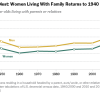How To Invest In Hungary

Hungary has come through the financial crisis as somewhat of an unusual success story. As the country entered the Great Recession saddled by the largest external debt burden in the European region, its bonds, equity markets and currencies took a major hit which lasted years. Hungary became the country that analysts loved to hate, as the poor economic outlook was compounded by a massive leverage problem in households, the financial sector, and the government. Instead of following an orthodox rulebook for crisis management, the newly elected socialist government led by Viktor Orban ignored widely accepted macro policy advice, and proceeded to use a host of unusual measures that were not market friendly, but have seemed to work for the economy in the longer run.
Fast forward to 2015-2016, and Hungary has enjoyed one of the highest growth rates in the region, for both developed and developing countries. It took several years to bring down household debt levels and stabilize the consumer, and since Hungary is closely tied to western Europe, malaise there carried through locally. As Germany’s economy picked up, Hungary’s began to follow suit. Hungary has also benefitted from record low interest rates at home. An absence of inflation in the European region combined with low oil and food prices has brought Hungary’s inflation close to zero and spurred the central bank to cut interest rates yet again. A policy interest rate of 1.2% is amazingly low relative to the country’s historical context. Low rates and low gas prices continues to support the Hungarian consumer.
Hungary GDP Growth Rate (%)

While debt levels remain high, they have been falling quite dramatically. First, the weak currency from 2008-2015 helped curb Hungarian’s appetite for imports. Second, the government has restrained spending, generating a primary surplus and enacting a strict policy to reduce national debt denominated in foreign currency. As a result, Hungary has entered a coveted “twin-surplus” situation on its current account and (primary) fiscal accounts – a far cry from its situation in the run-up to 2008.
Looking forward, the country is poised to keep growth decently high (2% or a bit higher) for the coming year. The economy faces a few obvious risks: issues regarding the refugee crisis and any additional fallout from the Volkswagen drama. Hungary has staunchly refused to cooperate with Europe on the refugee crisis, much to the dismay of its neighbors. The fallout is still uncertain. The country also hosts large automobile manufacturing sites, and provided a significant number of the vehicles that were affected by the Volkswagen emissions scandal. Again, the economic impact could be significant in terms of jobs or industrial output, but it yet uncertain.
In terms of investments, Hungary’s equity market (the Budapest Stock Exchange) has had an amazing run from 2015 to the present. The market really took off in the fourth quarter of 2015, as positive factors affecting the biggest companies came to fore. The Prime Minister also pledged to cut bank taxes, and the rating agency Fitch signaled a positive outlook on the country’s debt ratings. Fitch’s move to bring Hungary back to investment grade status is expected by May 2016, and likely foreshadows the another agency (Moody’s) similar move later this year. If Hungary achieves two investment grade ratings, it will likely attract a significant amount of new capital inflows. Finally, further interest rate cuts in 2016 should remain supportive of the equity markets. If Germany’s economy improves, Hungary’s will likely follow suit.





